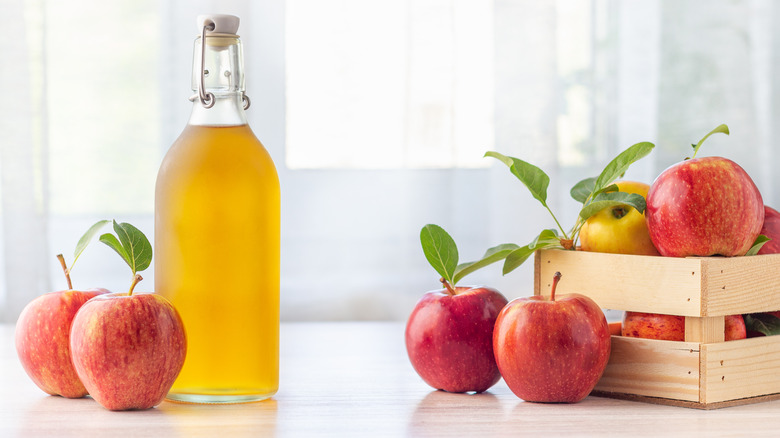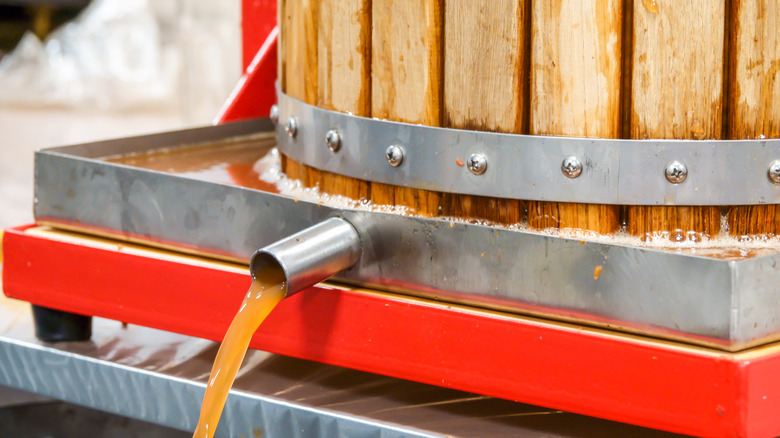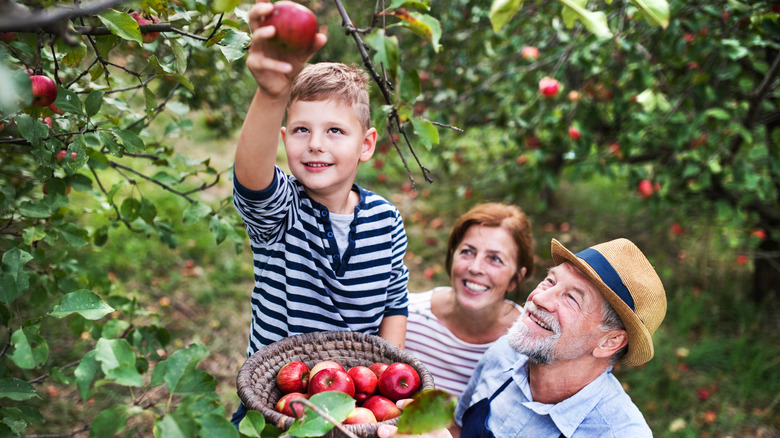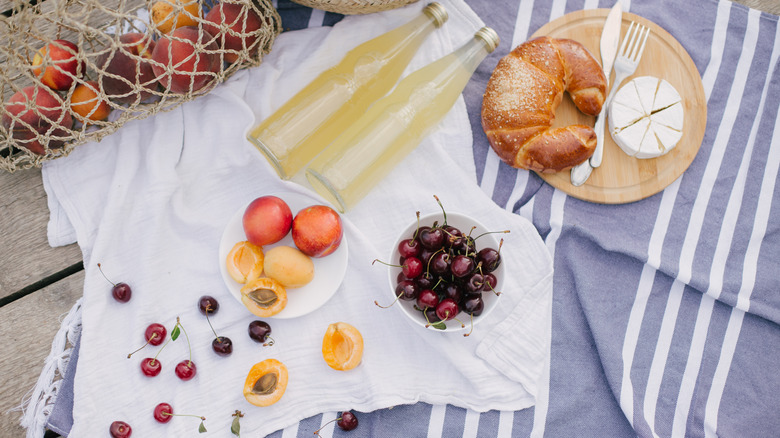Which Country Produces The Most Hard Cider?
Cider has been around for centuries, recognized as one of the world's oldest known beverages. Some tie its consumption to ancient Mesopotamia, the Roman Empire, and Greece, spanning thousands of years, notes AgronoMag. That's a whole lot of cider drinking, and there's no slowdown in sight. Market Data Forecast reveals a worldwide cider market value of $4.5 billion in 2022, with lots of growth potential.
While most countries consider it an alcoholic beverage, the United States refers to any cider type containing alcohol as "hard cider," explains WebMD. This distinguishes it from nonalcoholic American ciders in which the apples have not been fermented. Instead, both versions come from fresh-pressed, unfiltered apple juice. Hard cider harbors some powerful health benefits, including antioxidants, which help reduce the chance of cancer, heart disease, and issues related to aging, per Cidercraft Magazine. It can also aid in digestion and contains vitamin C to boost the immune system.
While producers across the globe churn out flavorful, region-specific ciders, one country, in particular, pours out the most cider love.
Cider love in France
Ireland and the United Kingdom may consume more hard cider than other countries, per Statista, but neither country is the highest worldwide producer. That nod goes to France. The northern regions around Normandy and Brittany thrive in the world of apple cider production, dating back to at least the sixth century, according to The Crafty Cask. The recognizable flavors of French cider are a culmination of ages-old techniques and modern production regulations. French cider crafters employ the "keeving" processing method that slows down fermentation to create the drink's signature light, fruit-forward flavors.
French producers must also use specified apple varieties and no more than 50% concentrated juices. Two dominant ciders flow from France: the sweet cidre doux with about 3% alcohol content, and the dryer cidre brut with roughly 4.5% alcohol, depending on the maker. The Guardian notes an additional French liquid luxury, a cider brandy known as Calvados, which contains at least 40% alcohol. Don't be surprised when your cider in France is presented with aplomb in an elegant champagne glass.
Cider distinctions per country
Though France reigns supreme in the world of cider, it has good company within the top cider purveyors, which include the United Kingdom and Australia, per AgronoMag. Differences are sometimes subtle but create distinct flavors based on apple types, sugar content, and carbonates.
The sweetness factor in French cider comes directly from the apples themselves, with no sugar added. Instead, natural fermentation creates the acid, which adds to the sweetness and gives it a bubbly champagne-like texture. Most cideries stick to a single apple variety per batch, giving rise to drinks named for the type of apple. Likewise, English and U.K. versions use a natural fermentation method with no added sugar and natural carbonation, but they also create the so-called "scrumpy" cider with alcohol levels as high as 12%.
Australians do things their own way, incorporating diversity and promoting a "craft cider" mentality from individual cider makers. The fruit is 100% Australian-grown, states the Australian Cider Guide, and makers choose designated apples based on a balance of sweetness, bitterness, and acidity. Popular varieties include Granny Smith, Pink Lady, Sundowner, and Sturmer Pippin. But Australian ciders are just as likely to be made from pears. Their perry drinks can be sweet and fragrant or complex with high tannins and acids.
Not just apples
Apples undoubtedly claim the fame when it comes to hard cider, but they aren't the only fruits in town. In addition to the perry drinks from Australia, pears make up a growing number of ciders worldwide, including ones made in America. Fruit grower and former plant-breeding specialist John Reynolds tells The New York Times that he prefers pears for cider making because of their relative complexity over apples.
He also reveals an adventurous spirit: a cider created from more obscure ingredients, such as chokeberries and sea buckthorn fruit. Other American farmhouse cider makers reveal concoctions featuring elderberry, rhubarb, quince, strawberry, pumpkin, honey, and sour cherry flavors, while AgronoMag notes wider experimentation employing tropical fruits, figs, currants, apricots, peaches, and more.
Cider increasingly shows few limits when it comes to standalone consumption. But how does the sweet, bubbly drink fare when accompanying a meal? Eat North suggests some autumn and winter foods that work well with the beverage, including squash soup and a turkey dinner with cranberry sauce and pumpkin pie. Earthy spices such as cinnamon, nutmeg, and ginger are good complements to the drink, creating perfect liaisons with desserts like gingerbread and cinnamon sugar doughnuts. Cider Culture recommends a contrast pairing of warm cheesy dishes or cheese fondue with a dry, still, high-tannin cider. The idea is to experiment and find taste buddies that work well for your family, friends, and special occasions.



